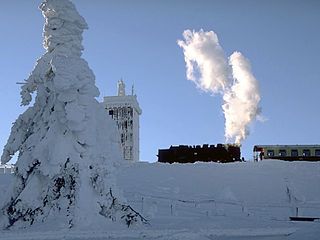From Guest Blogger Blake Meredith: Deep Energy Retrofits–A Necessity for Old Buildings
The winter, and its accompanying polar vortices, appears to finally be loosening its grip after months of drastic weather throughout the United States. States across the country experienced some of the coldest weather their homes had seen in years; cities like Chicago, in fact, had its coldest winter in recorded history. In an effort to find a positive side to the months of increased energy usage, we can only hope that some of the highest heating bills customers have seen yet will be enough to encourage a re-evaluation of their home and business’s energy usage and efficiency -especially there is no guarantee that this following winter will be any less cold.
Which leaves home and business owners with two options: either accept the rising energy costs, or put more effort into revamping buildings that are inefficient and out of date. The choice seems obvious, but for many building owners, the basic steps of energy efficiency have already been accomplished. Perhaps a building’s lights are LED, and the lights, heating, and cooling are automatically run through timers and smart thermometers. At this point in the game, many owners are facing the realization that if their older building (more than ten or fifteen years) simply was not created to the energy efficiency standards of newer structures. However, knocking down buildings and starting from scratch is an expensive, impractical, and generally unnecessary practice.
Studies show that focusing on energy efficiency and usage from buildings and homes is still a more effective and less expensive choice than investing in new energy sources. After all, on a global scale, residential and commercial buildings account for 40% of total final energy consumption, from HVAC, lighting, water heating, and further building functions, so a push on diminishing wastefulness in this area will have a much greater and more immediate effect than focusing on other, less sure practices (such as building wind turbines). At the moment, revamping a building to be more energy efficient will have instant effects on savings and efficiency, which is where retrofitting comes into play. Retrofitting involves giving older buildings, which often have out-of-date heating, cooling and lighting systems, an internal and external update. The entire process isn’t cheap, but it’s far less pricey than starting from the bottom up, and causes far less havoc for businesses who can’t afford to move offices while construction is taking place.
A retrofitting process involves all aspects of a building, but almost always includes revamping the thermal abilities of a building. Older buildings generally have poor insulation, a problem that isn’t easy to fix: after enough years, buildings will begin to lean, and walls are rarely straight. Creating an air-tight layer can be done, however, by creating accurate models of the building with laser scanners and traditional surveying technology, which can then be used to fit an interlocking system of thermally efficient materials, such as wooden cladding (TES, or timber-based facade) on walls and double or triple glazed windows. The new material is much more efficient than any added insulation that is simply “stuck on” to windows and walls.
In addition, heating, cooling and lighting systems are updated in order to ensure all three work in tandem with each other. Often, these systems are so separate that they actually wind up “battling” each other, wasting a building’s energy and resulting in a less than comfortable building temperature. Currently, ordinary weatherization programs can result in savings around 10% to 15%, with some even reaching up to 25% in saved energy, but retrofitting, with a thorough examination of energy deals, including renewable energy options from websites like albertaenergyproviders.ca or http://www.pluginillinois.org/ (depending on your area of residence) can increase these savings. With the cost of energy doubling in the past ten years, though, and the much more slowly decreasing cost of renewable energy systems and practices, it’s clear more needs to be done with the structures we already have available.
Deep, complex retrofitting projects are not inexpensive by any means. Only a few homeowners can commit to extensive renovations solely for the purpose of energy bill savings, but many businesses are in a more stable financial spot to dedicate funds to such a project. Though the costs are great, the returns are equally as large. Energy retrofits are hugely successful, with site energy reductions ranging between 31% to 74%.
In the future, retrofitting companies hope they’ll garner enough interest to create standardized packages, which would cut down on labor, material costs, training and consulting -resulting in a less expensive, tried-and-true process for retrofitting homes and businesses. A standard package might include air-sealing ducts, insulating all walls, replacing all windows, adding CFL/LED lighting, smart power strips, ENERGY STAR appliances and adding a sealed combustion furnace, a new gas tank of water heater, and improving site-wide building ventilation.

